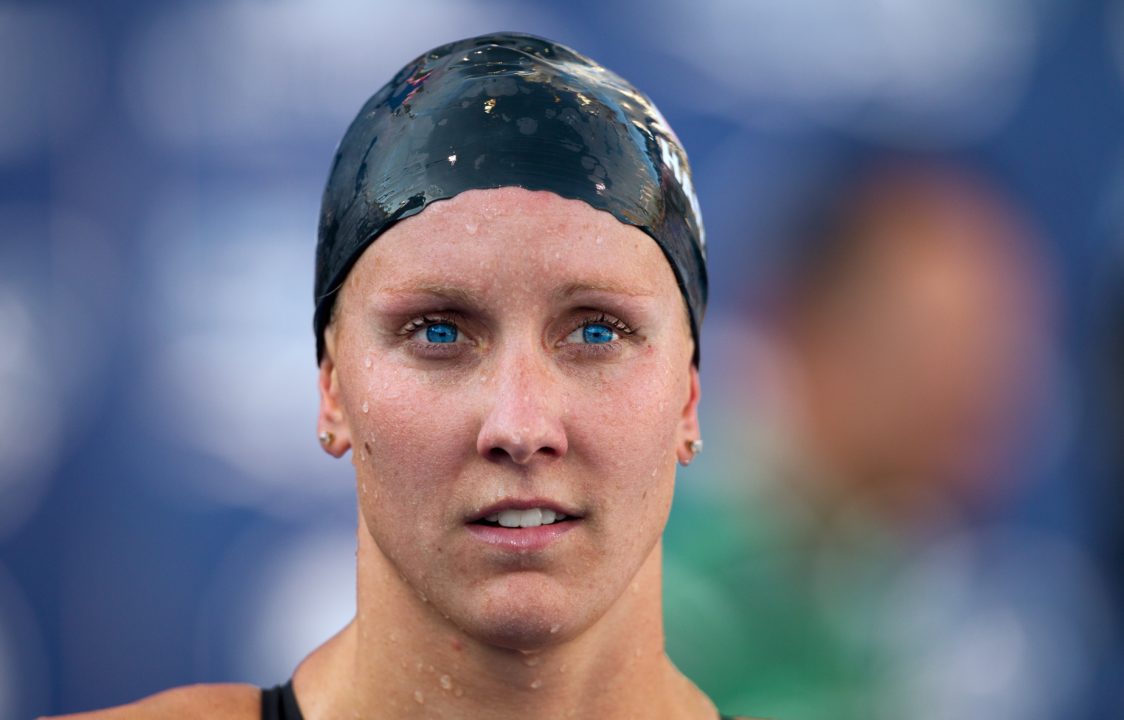https://www.youtube.com/watch?v=gOxFa5JRGdI
As anticipation builds for one of the biggest summers in sports, elite athletes are in their most intense training period as they aim to go stronger, further and faster for a chance to make history. Swimmers Jessica Hardy and Tyler Clary are preparing for the biggest stage in the world, by spending most of their days training, being in the water 10 or more times a week in addition to weight lifting and dryland workouts. After long, grueling days packed with workouts, it is important to refuel and replenish muscles quickly so they’re at their peak potential for the next workout or race. So what helps them get there?
SwimSwam caught up with Hardy to get the details about how this freestyle and breaststroke specialist is preparing for the largest stage in the world.
SwimSwam: How are you preparing for upcoming races?
Jessica Hardy: Definitely working very hard right now. This is the aerobic phase where I’m staring at the black line at the bottom of the pool all day, and the time in my training when my body is the most beat up, but I’m working hard every day.
SS: What does a typical workout week look like for you?
JH: I lift weights three times a week, Pilates twice a week, and yoga once a week. I don’t do as much water swimming as other swimmers do because I’m a sprinter, so I’ve cut that down and increased outside of the pool work. In the off-season I’ll run, cycle, and box – I like to do it all.
SS: Wow, that’s a lot to pack into a single week. How many hours a day do you spend training then?
JH: Training total time is anywhere from five to six hours a day. It’s definitely a full time commitment – just like a full time job.
SS: Where does nutrition and recovery fall on the scale of importance during your training?
JH: As I’ve become more established in my swimming career I’ve realized how important nutrition is and fueling my body. I just feel a difference, I feel so much more energy as I’m eating clean and eating my fruits and vegetables, and lean proteins. But more important, is recovery. When I’m traveling and in between competitions, every single day I’m mindful of it and lowfat chocolate milk is the first thing I drink right after practice.
SS: You mentioned you trust lowfat chocolate milk for recovery. Why is that?
JH: Athletic trainers within our sport have been fans of chocolate milk for years. And science also backs it up. It has the right carb-to-protein ratio to help replace muscle fuel (glycogen) that you lose in practice. So the sugars in chocolate milk are actually good for you after a tough workout, plus the protein helps repair and rebuild lean muscle. I definitely feel that a lot of my successes and a lot of my performances have been built with chocolate milk. Plus it tastes good!
SS: How long have you been recovering with chocolate milk?
JH: Most of my career I’ve been drinking it consistently after every single practice and every single race that I’ve done. It’s the thing I look forward to most after practice.
SS: What’s one piece of advice you’d give athletes who are looking to succeed in their sport?
If I had one piece of advice it would be: Never stop dreaming, and never give up on your dreams.
Clary and Hardy have joined forces with BUILT WITH CHOCOLATE MILK™ to share the benefits of recovering with chocolate milk after demanding exercise and give an up close look at how their preparations for the world stage are BUILT WITH CHOCOLATE MILK™. To learn more about the recovery benefits of lowfat chocolate milk, visit http://builtwithchocolatemilk.com/.
BWCM is a SwimSwam partner.
